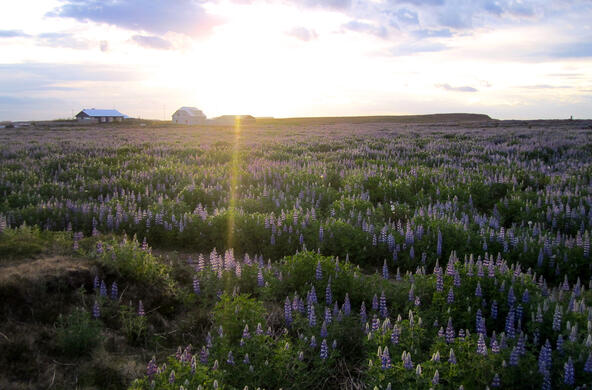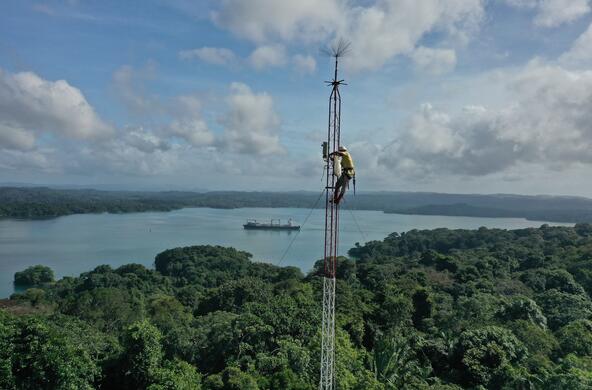Along with carbon dioxide, a suite of other gases absorb infra-red radiation that is leaving the Earth’s atmosphere, causing global warming. Methane is one of those gases. Methane is composed of one carbon atom and four hydrogen atoms, so its chemical formula is CH4.
Like CO2, some methane is natural in Earth’s atmosphere. It is produced by a wide variety of microbes in wet places—peatbogs, lake sediments, etc—known as anaerobic soils. Some methane is also produced in forest fires and by termites. And, some methane, known as natural gas, is produced deep in the Earth and flows naturally to the Earth’s surface where it joins the atmosphere. Before the Industrial Revolution, these sources of methane must have been in close balance with processes that destroy methane in the atmosphere, because the concentration in the atmosphere was relatively constant at about 650 parts per billion. Today’s concentration is about 3X higher, 1800 parts per billion and rising about 1% per year.
Where is the extra methane coming from? Humans have created a wide variety of new sources of methane, ranging from leakage from coal mines and oil and gas fields, emissions from rice paddies, emissions during the digestion of ruminant animals, and emissions from landfills and other waste management facilities. Some of these are difficult to control, but the emissions from landfills are occasionally captured and burned as a substitute for natural gas. By some accounts, the emissions from human activities have doubled the natural or background emissions to the atmosphere.
A molecule of methane has a lifetime of about 10 years in Earth’s atmosphere. Methane is destroyed by oxidation to CO2 in the atmosphere, but apparently the current rate of emissions, both natural and anthropogenic, has exceeded the rate of oxidation, so the concentration of methane in the atmosphere is increasing. Methane is known to be a strong absorber of infra-red radiation, perhaps 25X more effective than CO2 in that regard. Thus, the rise in methane in Earth’s atmosphere is a cause for alarm among climate scientists, but also represents an opportunity to design some effective measures against global warming. Specifically, any process that we might design to remove methane from the atmosphere, or curtail its emissions, will be 25X more effective molecule for molecule than attempts to do the same for CO2.
This is why the EPA has focused attention on the methane emissions during oil and gas production. Some estimates indicate that up to 10% of the natural gas produced in the United States is lost inadvertently to the atmosphere—fugitive emissions. Others place the amount at 0.42%. In any case, reducing natural gas leakage from oil and gas fields is one of the easier ways to reduce our overall emissions. Other promising avenues would be to increase methane-capture installations at landfills and manage the yearly cultivation and flooding of rice fields to reduce methane emissions. Other attempts to reduce methane emissions will be more difficult. Imagine, alternatively, regulations requiring Texas ranchers to capture the belches of cattle on the open range.
In any case, methane is one of several “greenhouse” gases that we must manage if we are to reduce the probability of harmful disruptions to Earth’s climate.
References
Schlesinger, W.H. and E.S. Bernhardt. 2013. Biogeochemistry: An analysis of global change. 3rd ed., Academic Press, Elsevier, New York.







